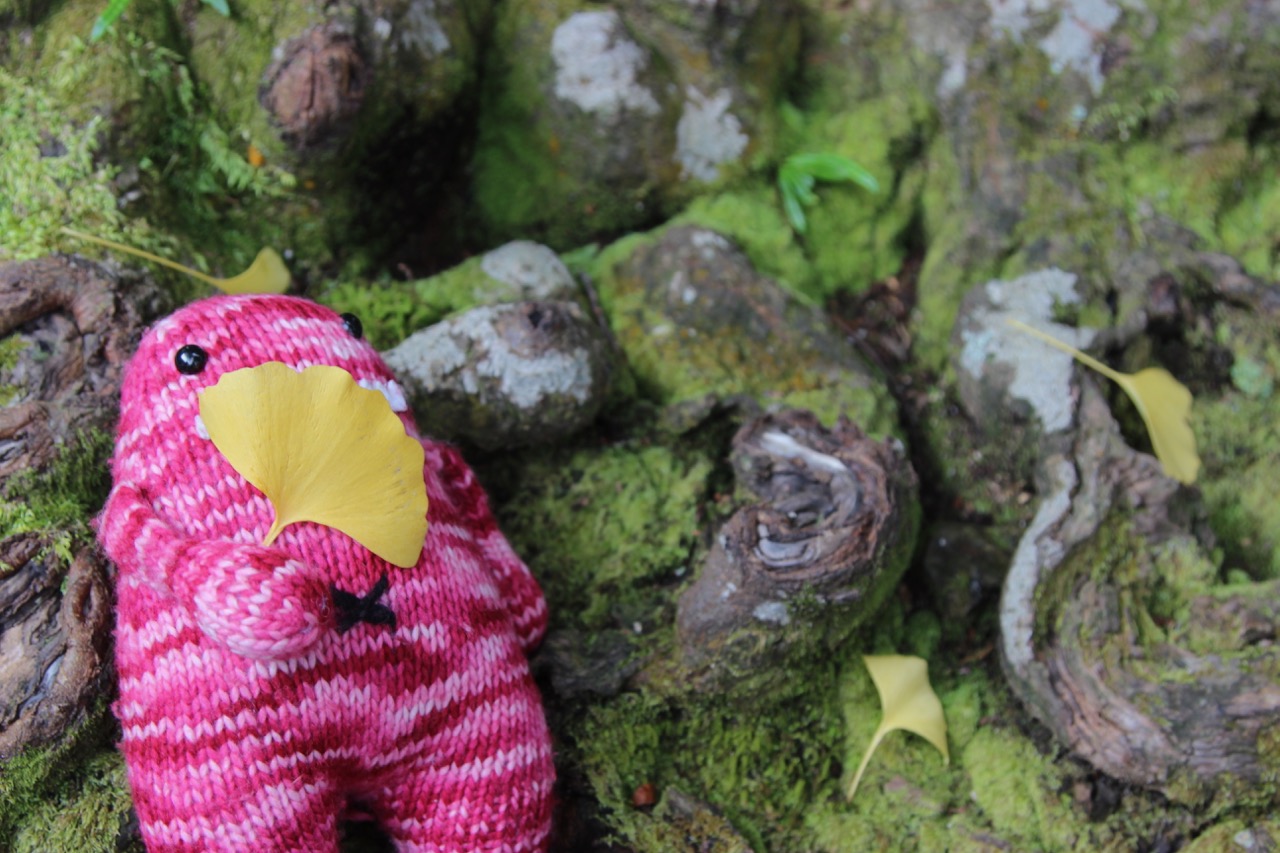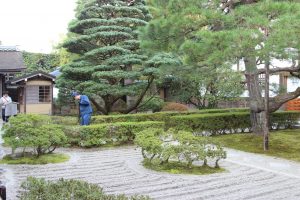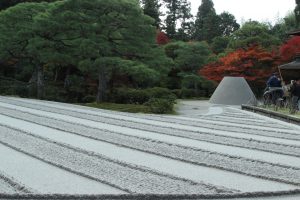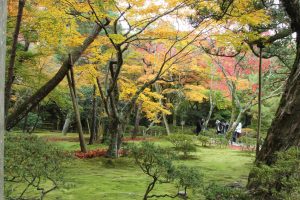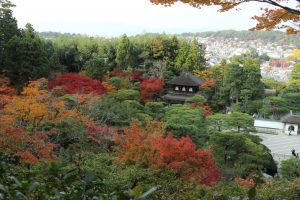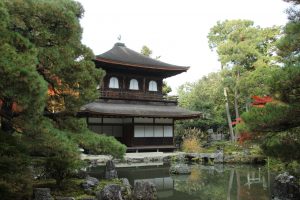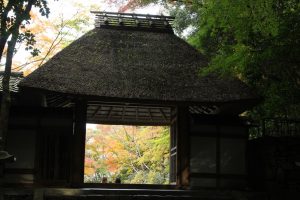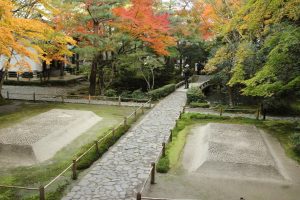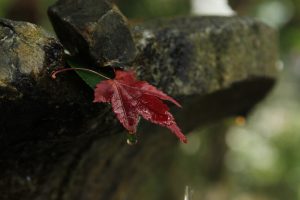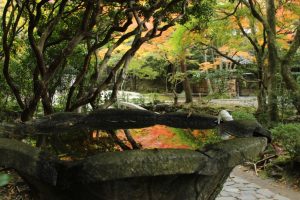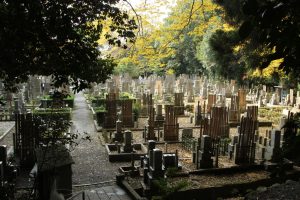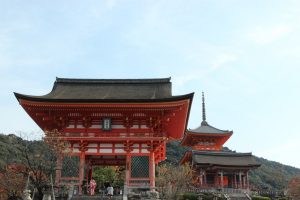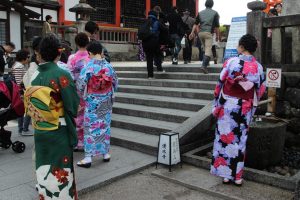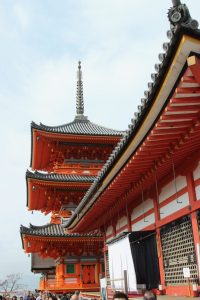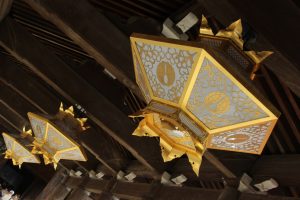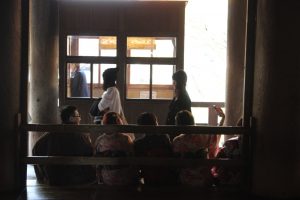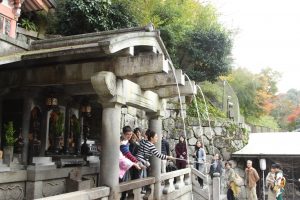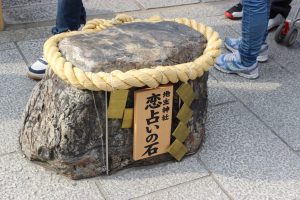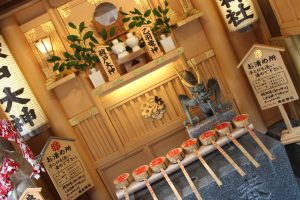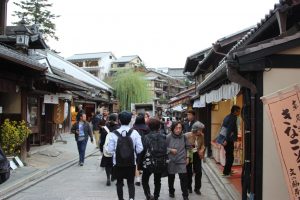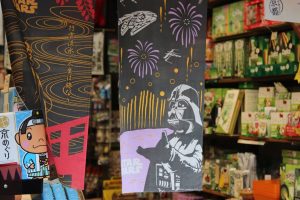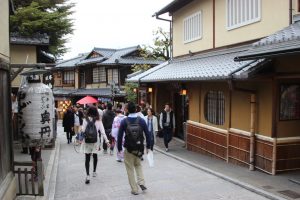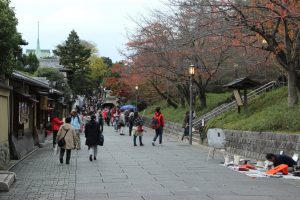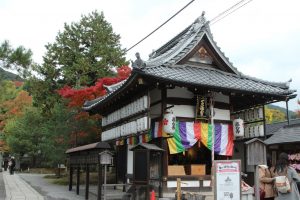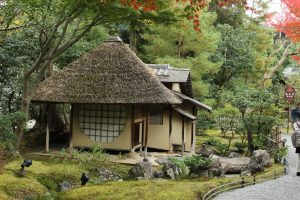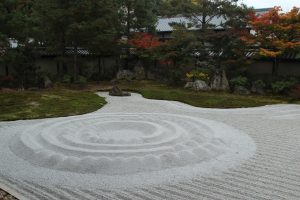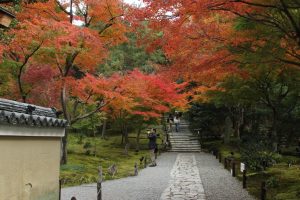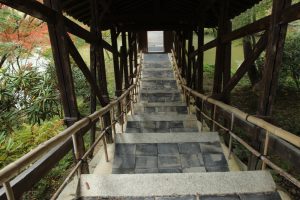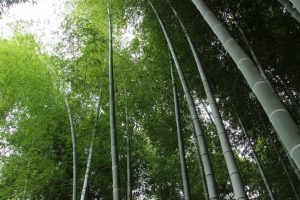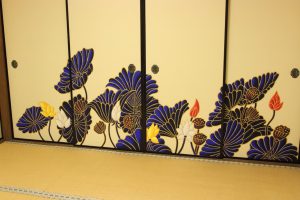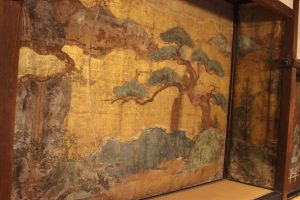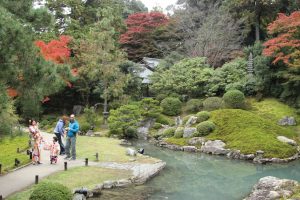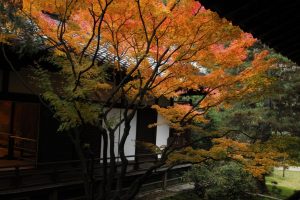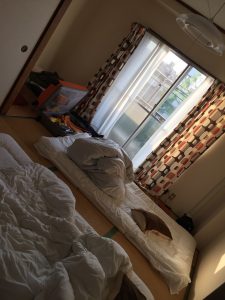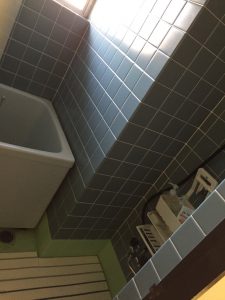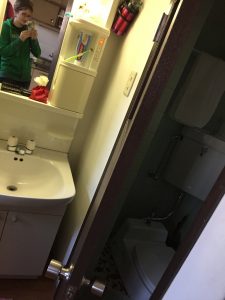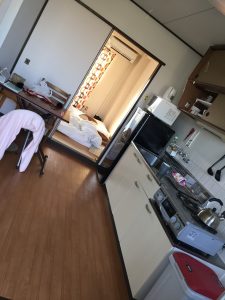For an excellent lesson in life’s futilities, look no further than the groundskeepers of each of Kyoto’s shrines, temples, and parks during fall. In ‘merica, we’d leaf-blow those little buggers into oblivion, but the (usually elderly) caretakers here bend over and painstakingly scoop up or sweep away by hand all the little leaves, resulting in a peaceful, spotless oasis of bright fall foliage against vivid green moss.

Today, we would visit many immaculately cared-for gardens around temples and shrines and parks of Kyoto, focusing on the Higashiyama district. We were ready for mountains today since we’d had mountains yesterday and the day before!
Ginkaku-ji 銀閣寺
We went to Ginkaku-ji early to avoid the tourist hordes, which surely would be worse because it was becoming peak leaf time in Kyoto. Ginkaku-ji is at the top of a small incline and at the end of a row of shops, and this morning it was quite chilly. The locals were, of course, wearing winter outfits…we were not.
Ginkaku-ji is known for its zen gardens, and it is not covered in silver like its golden cousin. Because it was early, we could hear streams flowing and birds chirping, and spent extra time reveling in the garden’s peace. The forest spirits from Princess Mononoke probably lived here in the rolling moss when they weren’t filming movies.
As we were leaving, more people began filing in to the temple. We ate green tea puffs and were on our merry way, along some back streets to another temple that was recommended by our book for being beautiful, free, and usually empty.
Honen-in 法然院
I am worthless at directions. I’m not sure why Grant keeps trusting my directions, and I am surprised we only got lost once so far, in Tokyo, and that was because my GPS was going insane and I didn’t bother to read landmarks off the map. The book even said that Honen-in might require directions since it’s tucked away up a back street.
What has two thumbs and didn’t need directions?! This girl. Oh yeah. Got there, not even lost a little bit, though we did climb some stairs that were questionable at the time.
Honen-in was indeed tucked away in a hard-to-notice place, and it was definitely quiet. The entrance consisted of a modest gate with a thickly thatched roof, and the inside featured meditational landscaping and a few sculptures.
Kiyomizu-dera 清水寺
For our next trick, we will ride the bus to Kiyomizu-dera. Google has been doing solidly well on route guidance, despite the fact that it keeps telling us to go to the stops on the wrong side of the street, and we made it to the southern portion of the city with no issues.
Kiyomizu-dera was swarming with people by now – pretty ladies in rental kimono, armed with selfie sticks, were scattered everywhere in the crowds. I discovered that at least half of these ladies were Chinese when I asked one of them in Japanese if she’d like me to take my picture and she reacted with a ??????? face and accompanying sound. Ok, I don’t think my Japanese is that bad…but it turns out our common language was English!
The people who make vermillion paint surely make a killing in Kyoto. Keeping these shrines, gates, and everything in between in decent shape must require a lot of yearly maintenance and at least one metric ton of paint. Kiyomizu-dera featured beautiful orange pavillions, an expansive temple, and plenty of gurgling waterfalls on its expansive grounds. We also ducked into a photography display called Feel Kiyomizudera. The display documented the faith and lives of the monks who work in Kiyomizudera and the rituals they perform. It was beautiful and I sadly do not have any photos of it.
Sannen-zaka 三年坂
We shuffled out of the temple and into nearby Sannen-zaka, a street filled with traditional shops and snacks. Crazy people with rickshaws were running up and down the street, dodging tourist packs as they transported their kimono-wearing passengers up to the temples.
Kodaiji 高台寺
The book said this was up a lot of stairs. We braced ourself for the worst because we had already been up a lot of stairs on this trip and it wasn’t pretty.
It was definitely not up a lot of stairs. It was, however, a beautiful temple situated slightly above the street and in the side of a mountain. We wandered the galleries and gardens for a while. In their heyday, they were used for meditation, moon-viewing, and tea drinking.
Maruyama Park 円山公園
Maruyama Park was a pleasant refuge, if a crowded one. There were ice cream stands and cafes, and your typical park crowd of people taking pictures of the leaves and kimono-clad women with selfie sticks. We found an ancient cherry tree, and then we found our way out and to our last stop, Shoren-in

Shoren-in 青蓮院
Our last stop on our weary legs was Shoren-in, which had both a beautiful garden and and an open interior. We could wander the grounds freely and explore most of the house in our socks. It was many open, empty tatami rooms with decorative screens and objects from the people who lived there. The ceilings were also really low. For anyone taller than 5’6″, they might have hit their heads consistently on the dividers between rooms!
Tomorrow we leave our cozy air b&b for the shinkansen and the wild world of Hiroshima.
Some pics of our place, before I forget! We were finally able to eat at the curry place on the first floor of the building. It was fantastic, funky, spicy, and very delicious.
